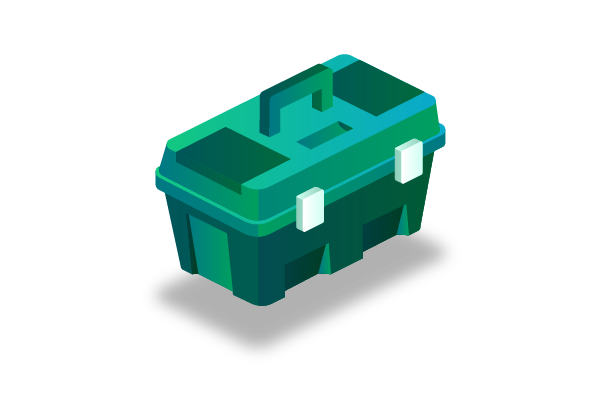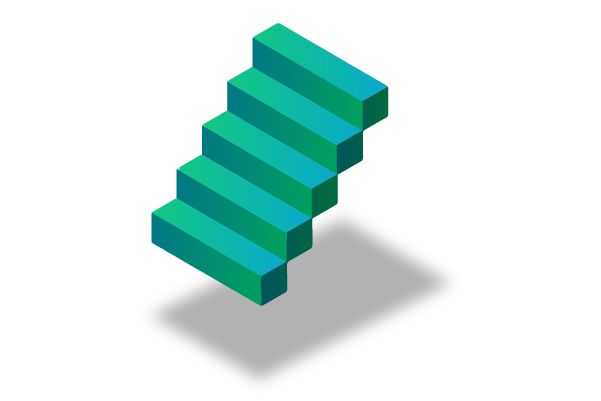In the dynamic realm of software development, Decentralized Applications (dApps) are making waves. Unlike traditional applications, which run on centralized servers, dApps operate on blockchain technology ensuring security, transparency, and independence. For enthusiasts who are keen on pioneering the next innovative solution, knowing how to build a dApps is crucial. This guide will provide insights, techniques, and actionable steps to transform your ideas into a functioning dApps.
The term ‘dApp’ is no longer exclusive to the niche circle of blockchain aficionados. From gaming platforms to financial systems, dApps are redefining the way we think about applications and data management. The decentralization feature mitigates the risks of data breaches and server downtimes, promising a more resilient and trust-worthy digital landscape.
Are you intrigued by the promises of dApp and wish to construct one? Then, you’re in the right place! This comprehensive guide will elucidate every phase of Dapp development, from conceptualization to deployment.
What is a dApps?

A Dapp, short for decentralized application, is a unique type of application that operates on a decentralized network, commonly built on a blockchain. In contrast to conventional centralized applications, where the backend code is hosted on centralized servers, dApps function by establishing direct connections between users and service providers. The key characteristics of dApps include:
Transparency
All transactions and activities within a dApps are meticulously recorded on the blockchain, a distributed ledger technology. This transparency ensures that the history of actions is accessible to anyone, promoting accountability and trust.
Security
dApps employ cryptographic methods to secure transactions and data, rendering them highly resistant to unauthorized access and tampering. This robust security is a fundamental feature of blockchain technology, which underpins most Dapps.
Open-Source
Many Dapps are developed with open-source code, which means that the underlying programming code is freely available for inspection, modification, and contributions from the wider community. This open-source approach fosters trust among users and encourages collaborative development, making the application’s functionality more robust and adaptable over time.
These characteristics collectively distinguish Dapps from traditional applications and highlight their potential to revolutionize various industries by providing greater transparency, security, and community-driven innovation.
Essential Tools and Platforms for dApps Development

Developing decentralized applications, or dApps, requires a specific set of tools and platforms to ensure efficient development and smooth deployment. dApps are built on blockchain technology, which offers transparency, security, and decentralization. Here is an overview of some essential tools and platforms for DApp development:
Blockchain Platforms
- Choosing the right blockchain platform is crucial. Popular options include Ethereum, Binance Smart Chain, Polkadot, and Solana. Each platform has its own development environment, programming languages, and smart contract support.
Smart Contract Development Tools
- Solidity: A high-level programming language for Ethereum smart contract development.
- Vyper: An alternative to Solidity for Ethereum, designed to be more secure and readable.
- Rust: Used for smart contract development on platforms like Polkadot and Substrate.
- Ink!: A Rust-based language for smart contract development on the Polkadot ecosystem.
Integrated Development Environments (IDEs)
- Truffle: A popular development suite for Ethereum that provides a development environment, testing framework, and asset pipeline.
- Remix: An online Ethereum IDE with a built-in compiler and debugger.
- Visual Studio Code: Extensions and plugins are available for various blockchain platforms.
Web3 Libraries
These libraries enable communication between DApps and the blockchain.
- Web3.js: For Ethereum-based DApps.
- Web3.py: For Ethereum DApps using Python.
- ethers.js: Another library for Ethereum DApps.
Version Control Systems
- Tools like Git and GitHub are essential for collaborative development and code management.
Testing Frameworks
- Truffle Test: Part of the Truffle suite, it provides tools for testing smart contracts.
- Hardhat: An Ethereum development environment that includes testing.
Oracles
- To bring external data into smart contracts, you may need oracles like Chainlink or Band Protocol.
Wallets and Signers
- Developers need wallets like MetaMask or software-based signers to interact with DApps during development and testing.
DApp Frameworks
- Embark: A framework for Ethereum DApp development.
- Drizzle: A frontend library for building Ethereum DApps.
- Aragon: A framework for creating DAOs (Decentralized Autonomous Organizations).
Decentralized Storage
- Solutions like IPFS and Filecoin can be used for storing data in a decentralized and secure manner.
Security Tools
- Services like MythX and ChainSecurity can help in auditing smart contracts and ensuring their security.
Deployment Platforms
- Services like Infura, Alchemy, and AWS can assist in deploying and hosting your DApps.
Monitoring and Analytics Tools
- Platforms like Etherscan and DappRadar help in tracking the performance and usage of your DApps.
Community and Support
- Engaging with the blockchain community through forums, social media, and developer communities can be invaluable for getting help and sharing knowledge.
Token Standards
- Understanding and using blockchain token standards (e.g ERC-20, ERC-721) is crucial for creating fungible and non-fungible tokens within DApps.
Governance and DAO Platforms
- For DApps that require decentralized governance, platforms like Aragon, DAOstack, and MolochDAO can be useful.
Regulatory Compliance Tools
- As DApp development is subject to various regulations, tools like OpenLaw and Accord Project can assist in legal compliance.
It’s important to note that the choice of tools and platforms may vary depending on the specific blockchain you are developing for, the project’s requirements, and your team’s familiarity with the technologies. Staying up to date with the rapidly evolving blockchain ecosystem and its tools is crucial for successful DApp development.
Also Read: What Are Sidechains? Revolutionizing Blockchain Scalability
Steps to Building Your First dApp

Building your first decentralized application (dApp) is an exciting venture into the world of blockchain and smart contracts. Dapps leverage blockchain technology to provide transparency, security, and decentralization. Here are the steps to get you started on your Dapp development journey:
1. Define Your dApp Idea
Start by defining the purpose and functionality of your Dapp. What problem does it solve? What kind of transactions or data will it handle? Clear and specific goals will guide your development process.
2. Select a Blockchain Platform
Select the blockchain platform that matches your project’s requirements. Ethereum is a popular choice, but there are others like Binance Smart Chain, Polkadot, or even your own private blockchain. Make sure your platform supports the programming language and features you need.
3. Learn Smart Contract Development
Smart contracts are the heart of a Dapp. You’ll need to learn a language like Solidity for Ethereum, Vyper, or Rust for other blockchains. Understand the principles of blockchain programming, like transactions, gas fees, and contract interactions.
4. Set Up a Development Environment
Install the necessary tools, such as a code editor, a blockchain node, and a test network (like Ropsten for Ethereum). You may also want to consider using development frameworks like Truffle or Hardhat to simplify the process.
5. Write and Deploy Smart Contracts
Create the smart contracts that define the logic of your Dapp. Test them extensively on the test network to ensure they function correctly and securely. Once you’re satisfied, deploy the contracts to the mainnet.
6. Create a User Interface (UI)
Design and develop the frontend of your Dapp. You can use web technologies like HTML, CSS, and JavaScript, along with web3 libraries to interact with your smart contracts. Ensure that your UI is user-friendly and responsive.
7. Connect the UI with Smart Contracts
Integrate your UI with the deployed smart contracts. This involves setting up a connection to the blockchain network and interacting with your contracts through functions and events.
8. Handle Security and Testing
Implement security best practices to protect your Dapp from vulnerabilities. Audit your smart contracts, test for potential issues, and consider using tools like MythX or ConsenSys Diligence to ensure the security of your code.
9. User Authentication
If your Dapp requires user accounts, implement a secure authentication system. You can use blockchain wallets like MetaMask or create your own authentication methods.
10. Testing and Debugging
Thoroughly test your Dapp on the mainnet and fix any issues that arise. Consider setting up a bug bounty program or seeking community feedback to uncover potential problems.
11. Deploy to Mainnet
When you are confident that your Dapp is secure and functional, deploy it to the mainnet for public use.
12. Market and Promote Your Dapp
Let the world know about your Dapp through various marketing channels, such as social media, forums, and developer communities. Building a user base and gathering feedback is crucial for your Dapp’s success.
13. Iterate and Improve
Continuously update and improve your Dapp based on user feedback and changing requirements. Blockchain technology is rapidly evolving, so staying up-to-date is essential.
Building your first Dapp can be a challenging but rewarding experience. It requires a solid understanding of blockchain technology, programming skills, and a commitment to security. As you gain more experience, you can explore more complex Dapp concepts, such as decentralized finance (DeFi) or non-fungible tokens (NFTs).
Challenges in dApp Development and How to Overcome Them
Developing decentralized applications, or Dapps, comes with a unique set of challenges due to their blockchain-based and decentralized nature. Here’s a more detailed exploration of some of the key challenges in Dapp development and strategies to overcome them:
Blockchain Scalability
One of the most significant challenges in Dapp development is the limited scalability of many blockchain networks, like Ethereum. As more users and Dapps join the network, transaction congestion and high gas fees become common issues. To overcome this, developers can consider using layer 2 solutions like Optimistic Rollups, state channels, or sidechains to improve scalability. Additionally, exploring alternative blockchains that offer higher throughput can be a solution.
User Experience
Blockchain and Dapp interfaces can be daunting for non-technical users. A significant hurdle is ensuring a smooth and intuitive user experience. To address this challenge, designers and developers should focus on creating user-friendly interfaces and providing clear instructions to guide users through the Dapp. Testing with non-technical users for feedback can also help improve the UI/UX.
Security
Security is paramount in Dapp development. Smart contract vulnerabilities, hacks, and attacks on blockchain networks are common concerns. Developers must thoroughly audit and test their smart contracts and employ best practices for secure coding. Engaging with third-party auditors and staying up-to-date with the latest security standards is crucial.
Interoperability
Different blockchains and Dapps often use incompatible protocols and standards, which can hinder communication between them. Building cross-chain solutions and leveraging interoperability protocols like Polkadot, Cosmos, or bridges can help Dapps overcome this challenge and interact seamlessly with other platforms.
Regulatory Compliance
Navigating the evolving regulatory landscape for blockchain and cryptocurrencies is challenging. Dapp developers should consider compliance with local and international laws and regulations. Seeking legal counsel and staying informed about changing regulations is essential.
Token Economics
Creating a sustainable token economy is a crucial aspect of many Dapps. Developers need to balance token supply, demand, and utility to ensure the long-term success of their project. Economic models should be carefully designed and adjusted as needed.
Community Adoption
Attracting and retaining a user base is challenging in a competitive Dapp landscape. Dapp developers should focus on community building, marketing, and fostering a loyal user base. Engaging with the community, incorporating user feedback, and providing incentives can help boost adoption.
Data Privacy
Blockchain is inherently transparent, which can be a problem for Dapps dealing with sensitive data. Implementing privacy-enhancing technologies and encryption methods, like zero-knowledge proofs, can help protect user data while maintaining the security and integrity of the blockchain.
Upgrades and Governance
Ensuring that Dapps can adapt to changing needs and technological advancements is essential. Establishing a robust governance model and clear upgrade mechanisms is crucial. Decentralized autonomous organizations (DAOs) and token-based voting systems can help facilitate community-driven decisions.
Scalable Development
As Dapps grow and evolve, maintaining and improving them can become challenging. Using modular development practices and having a well-documented codebase can make it easier for new developers to contribute and for existing developers to collaborate effectively.
Developing Dapps is an exciting but challenging endeavor. Overcoming these challenges requires a combination of technical expertise, user-centric design, and a keen awareness of the ever-changing blockchain landscape. Staying informed, adaptable, and committed to security and user satisfaction is essential for Dapp developers to succeed in this dynamic field.
Also Read: What is Asset Layer? Unveiling Its Significance and Function
The Future of dApps
The future of Dapps, or decentralized applications, looks promising and exciting. These applications are like regular apps you use on your phone or computer, but they run on blockchain technology, making them more secure and transparent. As blockchain technology continues to evolve, Dapps are expected to become even more user-friendly and accessible to the average person.
In the coming years, we can expect to see Dapps making their way into various aspects of our lives, from finance and gaming to healthcare and education. The potential uses are endless, and developers are constantly exploring how to build Dapps that can solve real-world problems and enhance our daily experiences. With the rise of user-friendly development tools and platforms, more people will be able to create and use Dapps without needing to be blockchain experts. The key to the future of Dapps is making them easier to develop and use, so that they can truly revolutionize the way we interact with technology and each other.
Conclusion
The world of Dapps is brimming with potential, waiting for visionary developers to harness its capabilities. As we transition into an era of increased digital trust and decentralization, Dapps stand at the forefront, championing a future where users have control over their data, and transparency reigns supreme.
However, as with any technological venture, the journey of dApp development demands dedication, skill, and a penchant for continuous learning. By leveraging the right tools, platforms, and methodologies, you can navigate this dynamic landscape, turning your innovative ideas into decentralized realities.
So, are you ready to contribute to the decentralized revolution? Armed with the knowledge from this guide, you’re well on your way to shaping the future of digital applications!
Disclaimer: The information provided by HeLa Labs in this article is intended for general informational purposes and does not reflect the company’s opinion. It is not intended as investment advice or recommendations. Readers are strongly advised to conduct their own thorough research and consult with a qualified financial advisor before making any financial decisions.

I am Carina Caringal, a technical writer specializing in blockchain engineering concepts, decentralized systems, crypto infrastructure, and Web3 technologies. My work focuses on analyzing and translating complex technical mechanisms into precise, structured, and insightful content for both developers and non-technical readers who want a deeper understanding of the decentralized ecosystem.
My background in blockchain and cryptocurrency is rooted in years of independent research, continuous learning, and hands-on exploration across multiple protocols and network architectures. I study the underlying mechanics of distributed ledger technology, from consensus algorithms and smart contract logic to network scalability, security models, cryptographic principles, and interoperability frameworks. This technical foundation shapes the way I approach every article, ensuring accuracy, depth, and relevance.
- Carina Caringalhttps://helalabs.com/blog/author/carina-caringal/
- Carina Caringalhttps://helalabs.com/blog/author/carina-caringal/
- Carina Caringalhttps://helalabs.com/blog/author/carina-caringal/
- Carina Caringalhttps://helalabs.com/blog/author/carina-caringal/

